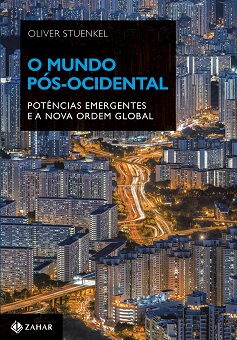
Book Review: “Third World Protest. Between Home and The World” by Rahul Rao
Oxford University Press
Reviewed for Meridiano 47, Vol 14, No 135 (2013).
The opening scene of this fascinating book about human rights in the Global South, nationalism (‘home’) and cosmopolitanism (‘the world’) by Rahul Rao, Lecturer in Politics at SOAS, is central London in 2003. The author participates in a manifestation against the impending Iraq War, seen by many as an imperialist venture that will most certainly endanger Iraqi civilians. Yet he also professes to the “struck by the tacit alliance between a politically correct Western left, so ashamed of the crimes of Western imperialism that it found itself incapable of denouncing the actions of Third World regimes, and a hyper-defensive Third World mentality (…).” After all, as British foreign policy makers pointed out, Saddam Hussein was guilty of the largest chemical weapons attack directed against a civilian-populated area in history, which took place in Halabaja in the late 1980s, at the end of the war against Iran.
Both sides may care about the fate of the Iraqi population. Yet, what sets the two groups apart, Rao remarks, is that they have identified different enemies: Communitarians and nationalists pointed to the international system as the main threat, while cosmopolitans point to the state, or, more specifically, to the often brutal ‘Third World state’.
Depending on where the threat is located – outside of inside – state boundaries have a great significance. For those who believe the threat is imperialism, boundaries are protective barriers to defend the local population. For cosmopolitans, they serve as a means for dictators to hide the atrocities they commit from the world. These two perspectives thus profoundly differ regarding the meaning of space and state sovereignty: For the communitarian-nationalist it must be strong as it provides a safe-haven to protect the domestic against the international, for example against financial volatility caused by a reckless and inherently unequal capitalist system. For cosmopolitans, on the other hand, the international space is safe and must overcome boundaries enlighten the few remaining backward societies in the world, where women do not enjoy equal rights, where homosexual conduct is punishable by death, and where local mismanagement is to blame for enduring poverty.
As Rao shrewdly observes, “no one had place for more than one enemy at a given time.” This is problematic, for threats clearly emanate from both the external and the internal. As a consequence, neither side provides an adequate intellectual foundation about how to think about Third World sovereignty. The author argues that the book’s normative ambition is to call for a more nuanced and creative approach that considers the dispersed nature of threats to human rights in the Global South. Frida Kahlo’s Self Portrait on the Border of Mexico and the United States, on the cover of the book, symbolizes this argument, depicting threats on both the cosmopolitan and the communitarian side. The world, Rao’s analysis shows, is far messier than most theories and dichotomies would like to have it.
His analysis of cosmopolitanism and communitarianism are very instructive – such as his argument that the contemporary praxis of cosmopolitanism relies on the current distribution of power in the international system, and that historically, enlightenment cosmopolitans often developed moral justifications for later exercises in imperialism. He writes that
the notion that ideas of cosmopolitan ethics enjoy a resurgence at those historical moments when their proponents sense the political power to take them forward, might explain a great deal about the provenance and timing of particular conceptions of cosmopolitanism. It might explain why non-Western universalist discourses seem to have emerged largely in the pre-colonial period. And (….) it may explain why liberal cosmopolitan discourse flourished in the unipolar moment afforded by the end of the Cold War.
The changes in the distribution of power currently taking place are thus bound to have profound implications for the future of cosmopolitanism. Will multipolarization lead to the return to non-Western universalist discourse, or are we heading towards the return of communitarianism in a world where no one possesses the capacity to advance cosmopolitan ideas on a global scale?
Rao’s analysis of humanitarian intervention and economic conditionality as manifestations of cosmopolitanism are contentious and he may not convince all of his readers, but he is correct to assert that many Western cosmopolitans have yet to grasp the communitarians’ perspective, and that “only by historicizing the experience of intervention in the Third World can we begin to appreciate the depth of hostility and resistance that its contemporary manifestations arouse.”
Yet Rao is as critical of unrestrained forms of communitarianism and pluralism, which, he reminds us, has allowed some leaders in developing countries – such as Idi Amin in Uganda – to slaughter his citizens without suffering reprobation from fellow leaders. The analysis of pluralism overlooks several important nuances – for example, contrary to the author’s claims, all African countries did commit to the ‘Responsibility to Protect’ at the 2005 UN World Summit – yet Rao is correct to assert that there remains something like an intuitive ‘Third World opposition’ to R2P. Aware of the shortcomings of both approaches, the author asserts that “we need to be critical of both home and the world, never giving our unthinking allegiance to either.”
After analyzing this question form a theoretical point of view, Rao applies it to protest thinkers in the Global South. Which threat do they focus on, and which narrative do they adopt, to further their cause? Countering expectations that cosmopolitanism is merely a perspective of elite benevolence, and communitarianism a form of subaltern resistance, Rao shows that Third World protest movements make use of both perspectives – women’s rights movements, for example, are partly communitarian in their efforts to develop new communities against existing groups. But they are also profoundly cosmopolitan in their attempts to create international alliances and challenge national legislation. Many of these moments tactically focus on a singular threat and enemy at a time, but they are shrewd enough to be flexible, which creates an ambiguous relationship these movements have towards boundaries and threats.
While this is an academic book without the ambition to develop any direct policy-relevant arguments, Rao’s work is also of great relevance to the contemporary policy debate about the redefinition of sovereignty and the rise of the ‘responsibility to protect’ as a global norm. In addition, it can be highly instructive to those engaged in social protest movements in both the Global North and South.
Read also:
What does China think about R2P?








